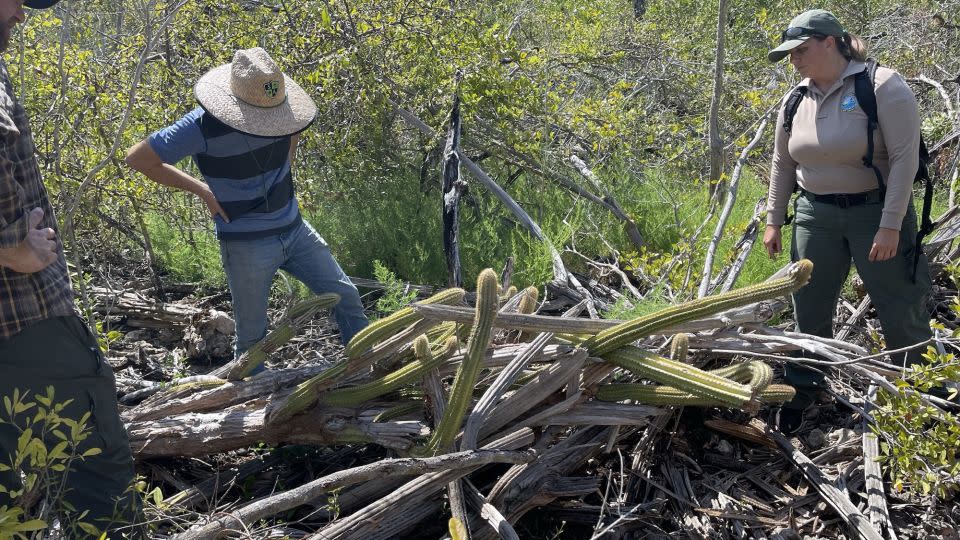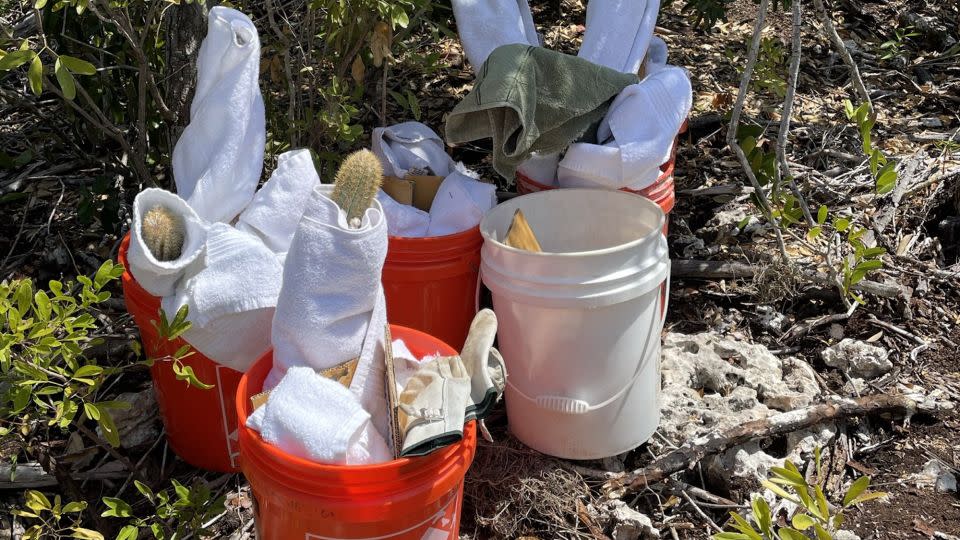A unique plant has become the first species in the United States to be exterminated from the wild by the compounding effects of rising seas, scientists say. It’s a grim first, but not last, as the scientists fear the demise of the plant is a “bellwether” for other species as the climate crisis tightens its grip.
The combined effects of sea level rise, rising tides and intense storms drove the wild Key Largo tree cactus population to extinction in its only known US location in the Florida Keys, according to the paper published this week in the Journal of the Botanical Research Institute of Texas.
“This is just one example of what’s happening to dozens of species, and people need to understand that if we don’t do something, this loss is just going to accelerate,” said George Gann, co-author of the study and executive director and president of the Institute for Regional Conservation.
The Key Largo tree cactus still exists in parts of the Caribbean, including Cuba, Puerto Rico and the Bahamas, but the chances of it re-establishing naturally in the Florida Keys is basically “zero,” Gann said.
Around 150 individuals existed in 2011 on a tidal rock barren atop a small limestone outcrop among a plethora of mangroves in John Pennekamp Coral Reef State Park. But by 2015, researchers noticed the cactus dying at an alarming rate, a consequence of a one-off animal attack, but also its location on the low-lying Florida Keys, most of which is just 5 feet above sea level.
The plant’s habitat was being swamped by saltwater from storms and high tides worsened by the rising sea. As fossil-fuel pollution heats up the planet, it also heats up and expands the oceans and melts ice sheets and glaciers, inching up water levels.
Sea levels around the Florida Keys have been rising by around an average 0.16 inches a year, or just over 8 inches since 1971, the researchers reported.
“Too much salt is just a stressful environment for most plants,” James Lange, study co-author and research botanist at Miami’s Fairchild Tropical Botanic Garden, told CNN.
Plants can tolerate salty seawater for a few days, but when the timeline extends into weeks or longer, “their structures are just not set up to deal with it because they’re no longer getting any freshwater – they can’t feed their bodies.”

By 2021, after years of exposure, only a few cactuses remained. Researchers chose to remove them from the wild rather than let them die. The final wild straggler was removed in 2023 “because it was clear that the area will only continue to succumb to sea level rise,” the researchers said.
The loss of the species in the US is “an indicator of a bigger problem,” Gann told CNN.
Sea levels are projected to rise up to 7 feet by the end of the century around the Florida Keys, bringing even worse tides and ocean water intrusion – an existential threat to many other species, scientists say.
“Unfortunately, the Key Largo tree cactus may be the bellwether for how other low-lying coastal plants will respond to climate change,” said Jennifer Possley, lead author of the study and director of regional conservation at Fairchild.
Possley said more than 1-in-4 native plant species are critically threatened with regional extinction in South Florida. They include the rare flowering plant Garber’s spurge, the smallflower lilythorn, smallfruit varnishleaf and the Grisebach’s dwarf morning glory.
And it’s not just plants. The intruding saltwater is depriving local wildlife of fresh drinking water and forcing them to consume moisture-retaining plants like the cacti, only worsening the problem for the threatened plants. To address this, biologists had to create small pools of freshwater to help keep animal and plant alive.
But these fixes are only temporary. The amount of planet-cooking pollution already baked in the atmosphere has locked in decades of sea level rise, which makes protecting biodiversity especially challenging, researchers say.


The researchers rescued the last remaining cacti from the wild, wrapping them with towels for protection, and whisking them away to a greenhouse off site to ensure the plants’ survival.
While there are plans to reintroduce the species back in the Keys, researchers say finding a suitable habitat that would contend with the rapid changes in climate has been “difficult.”
In the end, the Key Largo tree cactus may not have a future in a wild made too wild by the climate crisis.
For more CNN news and newsletters create an account at CNN.com
Source Agencies



